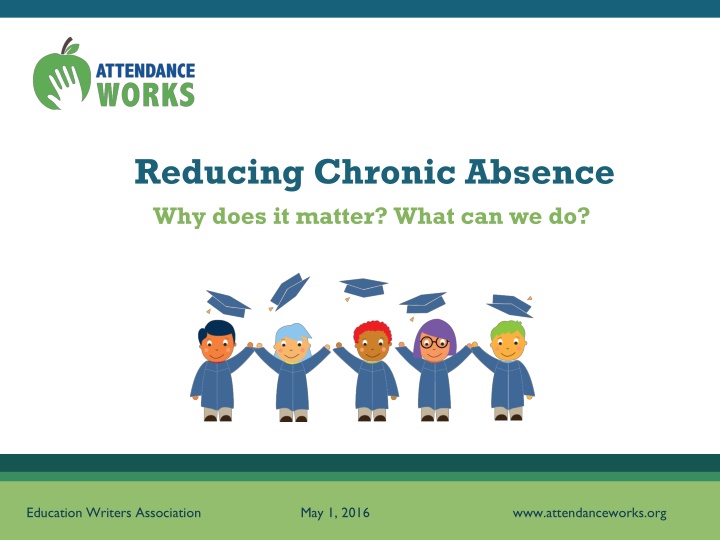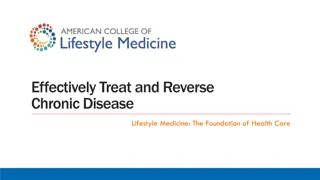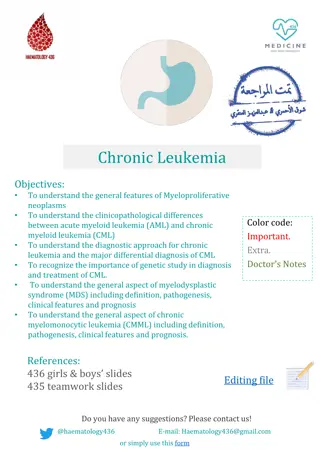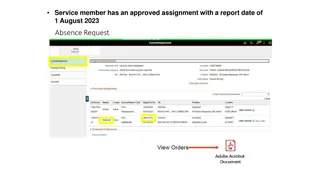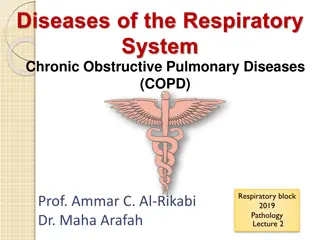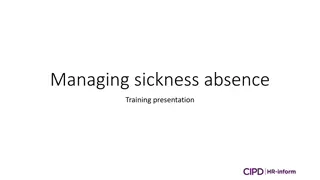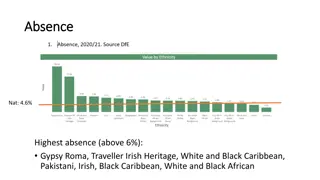The Importance of Addressing Chronic Absence in Education
Chronic absence in schools can have detrimental effects on academic outcomes and long-term success. It is crucial to differentiate between chronic absence and truancy, as each requires a specific approach for intervention. Attendance matters because it directly correlates with academic achievement, college readiness, and overall engagement in learning. By improving attendance, students benefit from exposure to language-rich environments, increased time on task in class, and better chances of academic success from an early age. A paradigm shift towards emphasizing preventive strategies rather than punitive measures can lead to positive outcomes for students. Research shows that addressing chronic early absence is essential to preventing long-term academic struggles and promoting better educational outcomes.
Download Presentation

Please find below an Image/Link to download the presentation.
The content on the website is provided AS IS for your information and personal use only. It may not be sold, licensed, or shared on other websites without obtaining consent from the author.If you encounter any issues during the download, it is possible that the publisher has removed the file from their server.
You are allowed to download the files provided on this website for personal or commercial use, subject to the condition that they are used lawfully. All files are the property of their respective owners.
The content on the website is provided AS IS for your information and personal use only. It may not be sold, licensed, or shared on other websites without obtaining consent from the author.
E N D
Presentation Transcript
Reducing Chronic Absence Why does it matter? What can we do? Education Writers Association May 1, 2016 www.attendanceworks.org
Multiple Measures of Attendance Average Daily Attendance How many students show up to school every day? The percent of enrolled students who attend school each day. It is used in some states for allocating funding. Who is missing school without permission? Typically refers only to unexcused absences. Each state has the authority to define truancy and when it triggers legal intervention. Truancy Who is missing so much school they are academically at risk? Broadly means missing too much school for any reason -- excused, unexcused, suspensions, etc. Researchers commonly define it as missing 10% of school. OCR currently defines it as missing 15 days and will be releasing a report in Spring 2016. Chronic absence is a required reporting metric in ESSA. Chronic Absence 2
Paradigm Shift Chronic Absence - Counts all absences - Emphasizes academic impact of missed days - Uses preventive strategies, positive messaging Truancy - Counts unexcused absences - Emphasizes compliance with school rules - Focus on punitive, legal solutions 3
Why Does Attendance Matter? Attainment Over Time Achievement Every Year Attendance Every Day Advocacy For All Developed by Annie E. Casey Foundation & America s Promise Alliance For more info go to http://www.americaspromise.org/parent-engagement-toolkit 4
Improving Attendance Matters Because it Reflects: Exposure to language: Starting in Pre-K, attendance equals exposure to language-rich environments especially for low-income children. Time on Task in Class: Students only benefit from classroom instruction if they are in class. On Track for Success: Chronic absence in K and 1st grade is a proven early warning sign that a student will be behind in reading by 3rd grade, failing courses middle and high school, and likely to drop-out. College Readiness: Attendance patterns predict college enrollment and persistence. Engagement : Attendance reflects engagement in learning. Effective Practice: Schools, communities and families can improve attendance when they work together. 5 (For research, see: http://www.attendanceworks.org/research/)
Chronic Early Absence Connected to Poor Long- Term Academic Outcomes Lower Lower levels of literacy in first grade Chronic absence in kindergarten achievement as far out as fifth grade A Rhode Island Data Hub analysis found that compared to kindergartners who attend regularly, those chronically absent: Scored 20% lower in reading and math in later grades and gap grows 2X as likely to be retained in grade. 2X likely to be suspended by the end of 7th grade. Likely to continue being chronically absent 6
Chronic absence affects an estimated 1 out of 10 students nationwide and more than 1 out of 3 in some communities. Vulnerable, low-income communities often have higher levels in the early grades. What type of data exists? School District State Department of Education Federal Office of Civil Rights Districts typically collect attendance data daily in their student information system. Most states collect attendance by student at least annually in their longitudinal student data base. OCR began collecting data on # of students missing 15 days in 2013-14. Is attendance data collected? Growing # calculate chronic absence rates, ideally by school grade, sub-population. Under ESSA, districts will be required to report. Some calculate & publish on-line chronic absence rates (level of detail varies). Will release chronic absence by school, district, state and sub- group in June/July 2016. Are chronic absence reports available? To create real-time early warning systems and identify points of intervention. To create accountability for addressing chronic absence to improve achievement To assess if there is an unequal opportunity to learn. How can it be used? 7
How Can We Address Chronic Absence?
Unpack contributing factors to chronic absence Myths Barriers Aversion Disengagement Absences are only a problem if they are unexcused Sporadic versus consecutive absences aren t a problem Attendance only matters in the older grades Lack of access to health or dental care Poor Transportation Trauma No safe path to school Homelessness Child struggling academically or socially Bullying Ineffective school discipline Parents had negative school experience Undiagnosed disability Lack of engaging and relevant instruction No meaningful relationships with adults in school Vulnerable to being with peers out of school vs. in school Poor school climate 9
Invest in Prevention and Early Intervention 10
Take a Data Driven Systemic Approach Positive Engagement: Positive Engagement: Uses caring relationships, effective messaging and a positive school climate to motivate daily attendance. Actionable Data: Actionable Data: Is accurate, accessible, and regularly reported in an understandable format. Positive Engagement Actionable Data Schools Students & Families Shared Accountability Capacity Building Capacity Building Capacity Building Expands ability to work together to interpret data, engage in problem solving, and adopt best practices to improve attendance. Shared Accountability Shared Accountability: Ensures chronic absence is monitoring & reinforced by policy Strategic partnerships Strategic partnerships between district and community partners address specific attendance barriers and mobilize support for all ingredients 11
Consolidated School District Consolidated School District of New Britain, CT of New Britain, CT Professional development: trained site administrators and teams to interpret attendance data, adopt best practices and engage in peer learning. Actionable data: sent report to school(s) every 10 days. The report indicates how many and which students are chronically absent School attendance teams: monitored the data and ensured appropriate supports are in place. Home visits: hired two family intervention specialists to conduct home visits to chronically absent kindergartners. Parent engagement and communications: messaged through newsletters, daily interactions with parents and attendance incentives. Community partnerships: used community agencies to offer supports at school sites and through a district Attendance Review Committee formed as a diversion to juvenile court and referral to the Department of Children and Families.
Consolidated School District Consolidated School District of New Britain, CT of New Britain, CT Chronic Absence Drops from 20% to 13% in grades K-8 in New Britain, CT 30% 2011-12 Baseline 2012-13 24% 24% 20% 19% 19% 18% 15% 15% 15% 15% 14% 14% 13% 13% 13% 12% 11% 11% 11% K 1 2 3 4 5 6 7 8 ALL
Possible Reporting Ideas Increase awareness that chronic absence is an overlooked challenge affecting achievement, especially for our most vulnerable students Deepen understanding of causes of chronic absence and potential solutions Inspire action by highlighting bright spots showing what works 14
